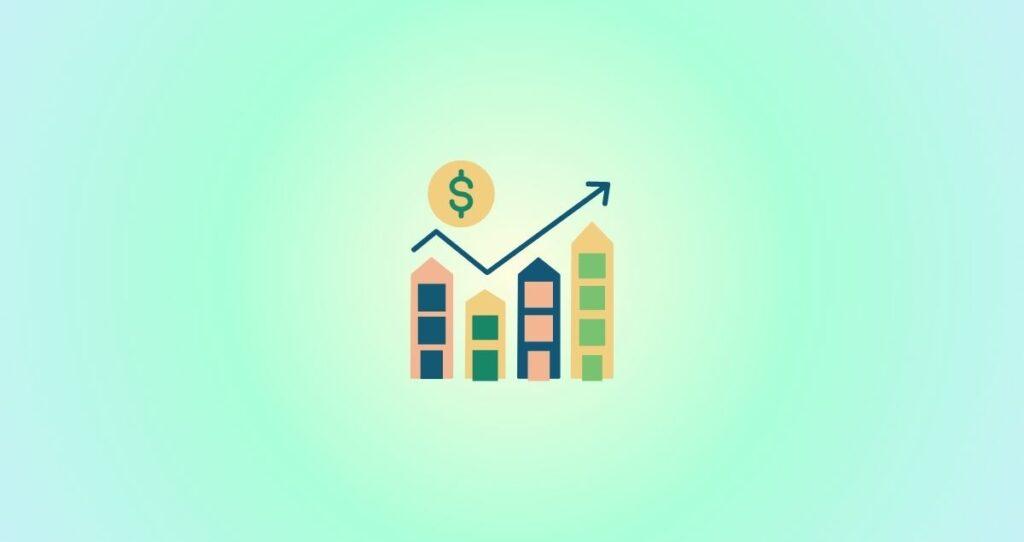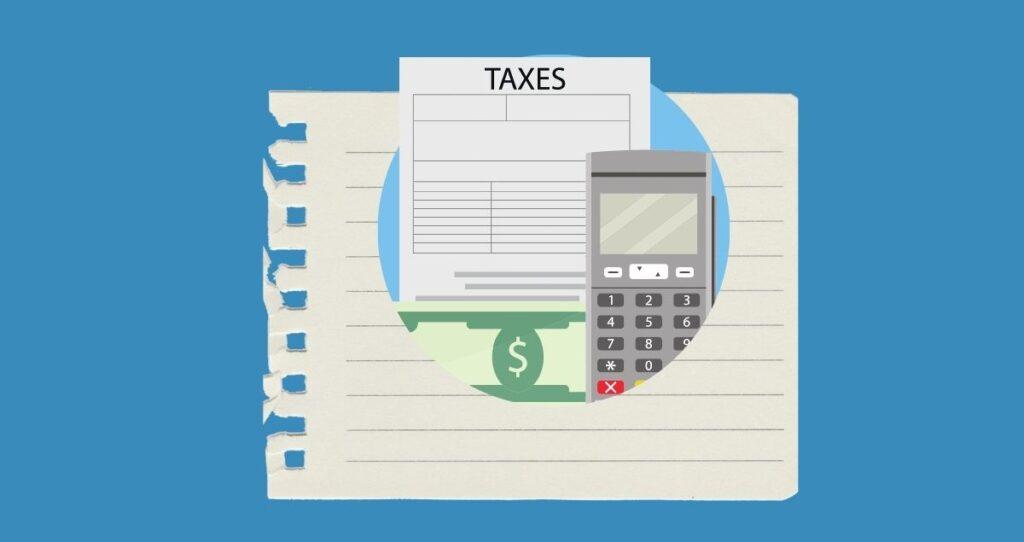An income portfolio is a portfolio made of investments that primarily pay income in the form of dividends, interest, and capital gains. These investments can be loans, stocks, real estate, deposit accounts, coupons, T-bills, and bonds. By default, an income portfolio has 80% fixed-income assets and 20% equities. Investors create income portfolios to earn attractive income from their investments.
An income portfolio is right for you if you planning to take distributions from your investments, you are cross to retirement, or are getting started with investing and don’t want to take on too much risk. For more details on how to form income portfolios and their pros and cons, keep reading.
What is an income portfolio?
When investing, you will come across the term income portfolio. Just like the name says, an income portfolio is a portfolio made of investments that primarily pay regular interest and dividends. The main goal of creating an income portfolio is to generate income from dividends, interest, and capital gains. An income portfolio is made of 80% fixed-income assets and 20% equities.
For example, dividend stocks pay dividends every quarter or yearly depending on when earnings are reported. For bonds and deposit accounts, however, you earn an interest regularly usually every month.
Having an income portfolio, however, does not mean you will regularly receive a paycheck. For example, if you have purchased dividend stocks and coupons, your dividends and interest will automatically be reinvested into the account by default. So, to receive dividends as a regular income payment, you will need to specify this option when you are buying these investments.
Other types of investment portfolios
An income portfolio is not the only portfolio you can form. There are other types of portfolios investors can make to maximize their returns and build wealth. The following are types of portfolios based on risk tolerance.
- Income portfolio: 80% fixed-income assets(bonds, coupons, deposit accounts, etc) and 20% equities such as stocks and stock-based funds
- Conservative portfolio: 60% fixed-income assets and 40% equities
- Moderate portfolio: 40% fixed-income assets and 60% equities
- Growth portfolio: 20% fixed-income and 80% equities
- Aggressive portfolio: 100% equities
How to make an income portfolio?
By default, an income portfolio is made of 80% fixed-income assets and 20% equities. To make an income portfolio, you will need to buy a mixture of bonds, stocks, and deposit accounts, and lend money while keeping the above percentages in mind. For example, if you end up having 60% fixed-income assets and 40% equities, it will no longer be an income portfolio. Instead, it will be a conservative portfolio.
Here are different types of portfolios and how to make each one of them.
Here is how to form an income portfolio
If you are interested in creating an income portfolio, here is a step-by-step strategy to make one.
1. Know your investment goals and risk tolerance
By default, your investment strategy should be based on your risk tolerance. The lesser the risk you want to take, the more fixed-income assets you will need to put into your portfolio. It is also possible that you are planning to take regular distributions from your income portfolio. For example, if you want to use your interest and dividends to cover ongoing expenses, it will make sense to form an income portfolio.
2. Know your target yield
The term yield represents the return an investment is giving you. For example, if you have a CD account that pays 2%, this 2% will be your yield. You can also consider your yield as your return on investments to keep things simple.
Before you buy any investments, you will need to know how much yield you are targeting and how the investment contributes to that yield.
What makes an income portfolio great is that your yield is predictable as interests and dividends are fixed. For example, if you buy a bond, you know ahead of time how much interest you will be earning every month, quarter, or year. Dividend stocks also offer a pre-determined dividend payout ratio or a predictable one. Deposit accounts also fall into the same category.
If you want to make $2,000 every month from your entire portfolio, you will need to calculate how much yield you are getting from your asset classes and buy them based on those requirements. For example, you can designate X$ at 4.5% in bonds, $Y at 5% dividend yield on dividend stocks, and $Z at 1.85% on deposit accounts to make that $2,000.
If your goal is to make $2,000 a month, it will be translated to $24,000 a year. Assuming that you are getting a 5% return on your portfolio, you will need to invest $480,000 to make $24,000 a year or $2,000 a month.
3. Form your income portfolio
After doing all the math, your next step is to start buying different investments you have selected. The following are different investments you can have in an income portfolio.
Money market accounts(MMAs)
MMAs are interest-bearing accounts that you can open at your local bank and credit unions. These accounts are a hybrid between a traditional savings account and a checking account but they require a much higher deposit amount.
Bonds
Bonds are also interest interest-bearing asset classes that offer higher interest rates than deposit accounts. You can either choose corporate bonds, government bonds, or municipal bonds. Investing in bonds is like giving a loan to the government or company and in return you get paid a fixed interest usually every month until your bond maturity date.
Certificates of deposit(CDs)
CDs are another type of deposit account you can open from your local bank and credit union. When you put money in a CD, the money is locked in the account until maturity. In exchange for not using your money, you get paid a fixed interest rate that is usually higher than traditional savings accounts.
Related: How to open a CD account: A Step-by-step guide
P2P lending
P2P lending is a way to lend money to different people through a P2P lending platform. As an investor, you get paid interest from your investments based on the terms established between you and the borrower through the P2P lending sites.
You might also like the 7 best peer-to-peer lending websites in 2022
Dividend stocks
Dividend stocks are another form of investment you can have in your income portfolio. To avoid high volatility, only buy large-cap stocks from well-established companies.
High-yield savings accounts(HYSA)
Unlike traditional savings accounts, high-yield savings accounts come with much higher interest. These accounts are often offered by online banks and similar financial institutions. With a high-yield savings account, you can easily get ten times what you would get with a traditional savings account.
What are the benefits of income portfolios?
Income portfolios come with a lot of distinct benefits which I will be covering below.
1. Regular income distributions
An income portfolio is great for those who want to use their earnings as an income source. For example, if you have $100,000 in a CD account at 5%, you will be making $500 every month in interest payments. This paycheck can help you take care of your expenses such as rent, utilities, food, etc, without liquidating your accounts. The money you have in similar investments such as high-yield savings accounts, bonds, dividend stocks, coupons, and T-bills, can all serve the same purpose. The point here is that if you need access to your earnings, an income portfolio will be your best choice.
2. Income portfolios come with low risks
One of the benefits of having an income portfolio is that it comes with low risks. A large percentage of assets you put into your portfolio are known as fixed-income assets. These assets pay regular interest and dividends and some of them come with a guarantee of the principal. For example, deposit accounts are usually insured by the Federal Deposit Insurance Corporation (FDIC) up to $250,000 per depositor and per account category.
This guarantee of return, however, means your ROI will be low. If you are close to retirement or cannot afford to lose your funds, an income portfolio will be a great choice for your financial needs.
3. Less volatility compared to equity portfolios
Income portfolios are less volatile compared to other types of portfolios such as growth portfolios and aggressive portfolios. Most of the assets you acquire in your income portfolio are not subjected to too much volatility. For example, if you have bonds and deposit accounts, their values will not change as much as regular stocks.
Even if you have dividend stocks in your income portfolio, they might not cause your portfolio to experience high volatility. Most dividend stocks are usually large-cap stocks with established market share which keeps their prices relatively stable. Additionally, the dividends you earn will help compensate for any volatility in your account.
Drawbacks of Income Portfolios
If you like the sound of an income portfolio, don’t jump right in until you have learned its drawbacks. The following are the drawbacks of income portfolios you should know.
Small return on investment
The first thing you need to know as an investor is that any investment that guarantees safety always yields a small return. That is a fact. All fixed-income assets that are used to form an income portfolio come with small returns on investments. For example, most deposit accounts are currently paying anywhere between 0.46% for savings accounts and 1.85% for a 12-month CD, according to the FDIC.
As of December 2023, bond rates and coupon rates are hovering around 4% to 5%, according to Bloomberg. At the same time, the inflation rate is at 3.14%, according to Ycharts. You can see that the average return on deposit accounts does not beat inflation while bond coupons and T-bills bearly beat inflation. This is why most investors don’t like income portfolios as it is hard to grow your net worth due to relatively low return on investments.
By default, an income portfolio is made of 80% fixed-income assets and 20% equities. So, the 20% you have in stocks and stock-based funds is not enough to give you an above-average portfolio growth.
Income portfolio earnings are subjected to tax
Another drawback of income portfolios is that your earnings whether dividends or interests are subjected to income tax in the year they were realized. For example, if you earned $5,000 in interest, you will pay an income tax when filing your taxes. Tax alone makes income taxes less attractive to savvy investors.
When does it make sense to form an income portfolio?
An income portfolio will be good for you under 3 conditions.
- You are new to investing. If you are getting started with investing, you probably don’t want to take on too much risk until you have learned how the game is played. As part of your risk management, you can create an income portfolio and later switch to other forms of portfolios. Your return on investment will be lower, but your funds will be secure.
- You are close to retirement. If you are getting close to retirement, you will need to form an income portfolio to minimize your risk while also earning some cash. The money you make can act as your retirement income and you can live off of it without liquidating your investments.
- You need access to consistent distributions. If you want to take out regular distributions from your investments, you will need to create an income portfolio and get a consistent paycheck from the interests and dividends.
Can you build wealth with an income portfolio?
The quick answer is yes you can build wealth with an income portfolio but it will take you a long time to reach your financial goals. An income portfolio comes with a lower return on investments. The small percentage of equities in your portfolio will not grow your account fast enough and your ROI is not high compared to other investment alternatives.
To give you a perspective, bonds are currently paying about 4% to 5% while stocks are returning about 10% on average. This means that it will take you two times longer to achieve the same results as someone who invested in equities.
Is an income portfolio worth it?
Investors usually build an income portfolio hoping to generate streams of income from it. For example, if you are in your retirement, you can live off earnings from your income portfolio without touching the principal. In this case, I would say that having an income portfolio is a great option for such an investor.
On the flip side, an income portfolio is not worth it for young investors especially those who don’t need access to their funds. Low returns and lack of compounding effect on some investments make income portfolios less attractive to many investors. If you are young and can afford to take on more risk, a growth portfolio might be the best investment portfolio in your case.









